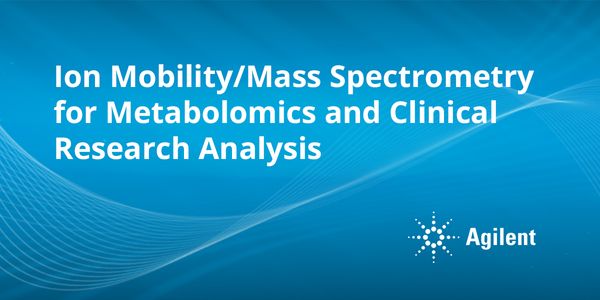NIH Grant
The National Institutes of Health (NIH) funds biomedical research in many areas including cancer, infectious disease, aging, environmental health, diabetes, and metal health. Investigators apply for grant funding by proposing specific research goals, experimental design, and applicability to improving human health and disease management. Proposals are peer reviewed and awarded based on available funding and NIH priorities.
-
JUN 18, 2019 | 11:00 AMDATE: June 18, 2019TIME: 11:00am PDT, 2:00pm EDT With highly competitive NIH budgets and ever-increasing restrictions on federal spending, getting noticed and winning...MAY 30, 2019 | 1:30 PMTissues in the body are wonderfully organized, with specific arrangements of cells, extracellular matrix, secreted molecules, and fluid flow that synergize that create emergent functions. How...Speaker: Rebecca Pompano, PhDMAR 13, 2019 | 11:50 AMThis talk provides a brief overview of funding opportunities for invasive device development for translation to clinical populations supported by the NIH BRAIN Initiative....MAR 13, 2019 | 11:20 AMJoin us in this unique opportunity to discuss neuroethics and innovative neurotechnologies....Speaker: Khara Ramos, PhD , Nader Pouratian, MD, PhD , Ashley Feinsinger, PhD , Francis Shen, JD, PhD , Saskia Hendriks, MD, PhDPresented at: Neuroscience Virtual Event Series 2019
MAR 13, 2019 | 11:00 AMThe implications of NIH BRAIN research stretch beyond traditional medical and research contexts. This LabRoots session will present recent developments at the intersection of neuroscience and...FEB 14, 2019 | 6:00 AMApproximately 30% of drugs have failed in human clinical trials due to adverse reactions despite promising pre-clinical studies, and another 60% fail due to lack of efficacy. The NIH Tissue C...Speaker: Danilo Tagle, PhD, M.S.Presented at: Laboratory Animal Sciences Virtual Event Series 2019
FEB 13, 2019 | 9:00 AMIn biomedical research, data should be treated as first-class corporate assets--they were expensive to create, they are expensive to maintain, and they have future business value. The petabyt...Speaker: Chuck Donnelly , Julie MorrisonPresented at: Laboratory Animal Sciences Virtual Event Series 2019
AUG 01, 2018 | 12:00 AMInduced pluripotent stem (iPS) cells are a promising source of personalized therapy. These cells can provide immune-compatible autologous replacement tissue for the treatment of potentially a...JUL 01, 2018 | 12:00 PMI describe several strategies for writing successful grant proposals. Each strategy derives from understanding the implications of two basic facts: funders seek to advance their mission...APR 30, 2018 | 8:00 AMIon mobility/mass spectrometry has tremendous potential for metabolomics, lipidomics, and clinical analysis. Ion mobility can resolve compounds unresolved by LC/MS/MS, provide additional stru...MAR 29, 2018 | 12:00 PMIt has only been in the last 20 years that we, the scientific/medical community, have appreciated the role of the endogenous Cannabinoid system (ECS) in maintaining a healthy immune system an...FEB 21, 2018 | 7:30 AMThis lecture introduces the evolving paradigm of Molecular Pathological Epidemiology (MPE) as simply as possible. Any given human disease represents fundamentally heterogeneous process,...NOV 08, 2017 | 9:00 AMPregnancy represents a time of rapid bodily change, which include physical proportions, physiology and responsibility. Arguably, nothing during these times changes more than the requirement a...Speaker: Bruce Hollis, PhDOCT 25, 2017 | 6:00 AMDATE: October 25, 2017TIME: 06:00am PDT, 09:00am EDTThis is the third topic in the webinar series on ‘Sanger Sequencing & Fragment Analysis made easy’.Repetitive DNA...SEP 14, 2017 | 10:30 AMAn unbiased metagenomic next-generation approach (mNGS) been shown to be useful in the broad identification of pathogens in clinical samples for infectious disease diagnosis, including viruse...SEP 14, 2017 | 6:00 AMINTRODUCTION: The recent coincidental emergence of the human microbiota and the Hologneomic Theory of Co-evolution unmasked the “Dual Citizenship” of symbiotic microbes and...MAY 10, 2017 | 10:30 AMC.E. CREDITSThe realization of the promise of personalized molecular medicine requires efficient development and implementation of novel targeted therapeutics linked to molecular markers able to identify...MAR 16, 2017 | 12:00 PMAlterations in homeostatic functions such as energy balance and sleep patterns are frequently seen in the elderly and these changes may precede and predict subsequent cognitive decline. ...MAR 15, 2017 | 10:30 AMBasal forebrain cholinergic inputs to the cortex are known to contribute to attentional performance. A major focus of my laboratory has been to study the receptors mediating the effects of ac...FEB 08, 2017 | 1:30 PMDATE: February 8, 2017TIME: 1:30pm PT, 4:30pm ETThe powerful and expanding use of genetically modified mice introduces important aspects of genetics in managing these strains for breedi...NOV 09, 2016 | 8:00 AMDATE: November 9, 2016 TIME: 8:00am PT, 11:00am ET This talk will characterize the current clinical and laboratory standards for determining risk for chronic renal dysfunction...Speaker: Ravindra Mehta, MD , Alan Maisel, M.D. , Olle Melander, MD, PhDSponsored By: Sphingotec LLC, Sphingotec LLCSEP 29, 2016 | 8:00 AMPRESENTED BY:DATE: September 29, 2016TIME: 8:00AM PT, 11AM ETInterest in 3D cell culture has grown exponentially in recent years, partially due to 3D cultures hel...AUG 30, 2016 | 8:00 AMThe central nervous system (CNS) is a conglomerate of diverse, interconnected tissues that each contain cell phenotypes specific to their distinct anatomical region. Recent studies have demon...APR 11, 2016 | 9:00 AM9:00 AM PT, 11:00 AM CT, 12:00 PM ET Epigenetics defines the set of distinct and heritable molecular mechanisms able to influence gene expression without altering the primary genetic seque...Speaker: Peter Jones, Ph.D., D.Sc. , Nandor Than, MD, PhDSponsored By: Zymo Research, Zymo Research
JUN 18, 2019 | 11:00 AM
DATE: June 18, 2019TIME: 11:00am PDT, 2:00pm EDT With highly competitive NIH budgets and ever-increasing restrictions on federal spending, getting noticed and winning...
MAY 30, 2019 | 1:30 PM
Tissues in the body are wonderfully organized, with specific arrangements of cells, extracellular matrix, secreted molecules, and fluid flow that synergize that create emergent functions. How...
Speaker:
Rebecca Pompano, PhD
MAR 13, 2019 | 11:50 AM
This talk provides a brief overview of funding opportunities for invasive device development for translation to clinical populations supported by the NIH BRAIN Initiative....
MAR 13, 2019 | 11:20 AM
Join us in this unique opportunity to discuss neuroethics and innovative neurotechnologies....
Speaker:
Khara Ramos, PhD
, Nader Pouratian, MD, PhD
, Ashley Feinsinger, PhD
, Francis Shen, JD, PhD
, Saskia Hendriks, MD, PhD
Presented at: Neuroscience Virtual Event Series 2019
MAR 13, 2019 | 11:00 AM
The implications of NIH BRAIN research stretch beyond traditional medical and research contexts. This LabRoots session will present recent developments at the intersection of neuroscience and...
FEB 14, 2019 | 6:00 AM
Approximately 30% of drugs have failed in human clinical trials due to adverse reactions despite promising pre-clinical studies, and another 60% fail due to lack of efficacy. The NIH Tissue C...
Speaker:
Danilo Tagle, PhD, M.S.
Presented at: Laboratory Animal Sciences Virtual Event Series 2019
FEB 13, 2019 | 9:00 AM
In biomedical research, data should be treated as first-class corporate assets--they were expensive to create, they are expensive to maintain, and they have future business value. The petabyt...
Speaker:
Chuck Donnelly
, Julie Morrison
Presented at: Laboratory Animal Sciences Virtual Event Series 2019
AUG 01, 2018 | 12:00 AM
Induced pluripotent stem (iPS) cells are a promising source of personalized therapy. These cells can provide immune-compatible autologous replacement tissue for the treatment of potentially a...
JUL 01, 2018 | 12:00 PM
I describe several strategies for writing successful grant proposals. Each strategy derives from understanding the implications of two basic facts: funders seek to advance their mission...
APR 30, 2018 | 8:00 AM
Ion mobility/mass spectrometry has tremendous potential for metabolomics, lipidomics, and clinical analysis. Ion mobility can resolve compounds unresolved by LC/MS/MS, provide additional stru...
MAR 29, 2018 | 12:00 PM
It has only been in the last 20 years that we, the scientific/medical community, have appreciated the role of the endogenous Cannabinoid system (ECS) in maintaining a healthy immune system an...
FEB 21, 2018 | 7:30 AM
This lecture introduces the evolving paradigm of Molecular Pathological Epidemiology (MPE) as simply as possible. Any given human disease represents fundamentally heterogeneous process,...
NOV 08, 2017 | 9:00 AM
Pregnancy represents a time of rapid bodily change, which include physical proportions, physiology and responsibility. Arguably, nothing during these times changes more than the requirement a...
Speaker:
Bruce Hollis, PhD
OCT 25, 2017 | 6:00 AM
DATE: October 25, 2017TIME: 06:00am PDT, 09:00am EDTThis is the third topic in the webinar series on ‘Sanger Sequencing & Fragment Analysis made easy’.Repetitive DNA...
SEP 14, 2017 | 10:30 AM
An unbiased metagenomic next-generation approach (mNGS) been shown to be useful in the broad identification of pathogens in clinical samples for infectious disease diagnosis, including viruse...
SEP 14, 2017 | 6:00 AM
INTRODUCTION: The recent coincidental emergence of the human microbiota and the Hologneomic Theory of Co-evolution unmasked the “Dual Citizenship” of symbiotic microbes and...
MAY 10, 2017 | 10:30 AM
C.E. CREDITS
The realization of the promise of personalized molecular medicine requires efficient development and implementation of novel targeted therapeutics linked to molecular markers able to identify...
MAR 16, 2017 | 12:00 PM
Alterations in homeostatic functions such as energy balance and sleep patterns are frequently seen in the elderly and these changes may precede and predict subsequent cognitive decline. ...
MAR 15, 2017 | 10:30 AM
Basal forebrain cholinergic inputs to the cortex are known to contribute to attentional performance. A major focus of my laboratory has been to study the receptors mediating the effects of ac...
FEB 08, 2017 | 1:30 PM
DATE: February 8, 2017TIME: 1:30pm PT, 4:30pm ETThe powerful and expanding use of genetically modified mice introduces important aspects of genetics in managing these strains for breedi...
NOV 09, 2016 | 8:00 AM
DATE: November 9, 2016
TIME: 8:00am PT, 11:00am ET
This talk will characterize the current clinical and laboratory standards for determining risk for chronic renal dysfunction...
Speaker:
Ravindra Mehta, MD
, Alan Maisel, M.D.
, Olle Melander, MD, PhD
Sponsored By: Sphingotec LLC,
Sphingotec LLC
SEP 29, 2016 | 8:00 AM
PRESENTED BY:DATE: September 29, 2016TIME: 8:00AM PT, 11AM ETInterest in 3D cell culture has grown exponentially in recent years, partially due to 3D cultures hel...
AUG 30, 2016 | 8:00 AM
The central nervous system (CNS) is a conglomerate of diverse, interconnected tissues that each contain cell phenotypes specific to their distinct anatomical region. Recent studies have demon...
APR 11, 2016 | 9:00 AM
9:00 AM PT, 11:00 AM CT, 12:00 PM ET
Epigenetics defines the set of distinct and heritable molecular mechanisms able to influence gene expression without altering the primary genetic seque...
Speaker:
Peter Jones, Ph.D., D.Sc.
, Nandor Than, MD, PhD
Sponsored By: Zymo Research,
Zymo Research
























